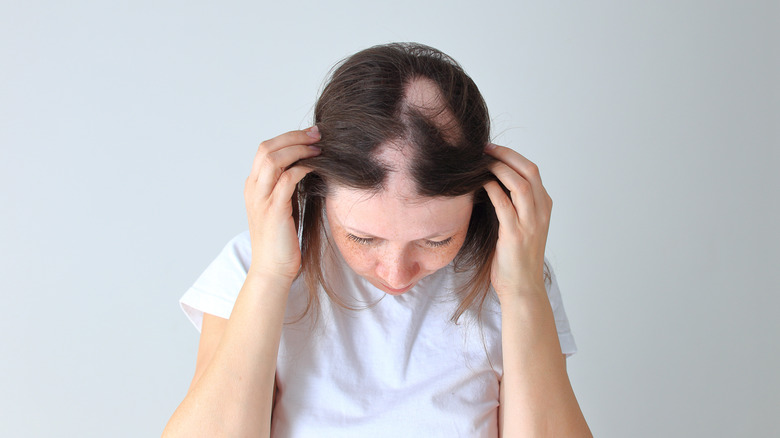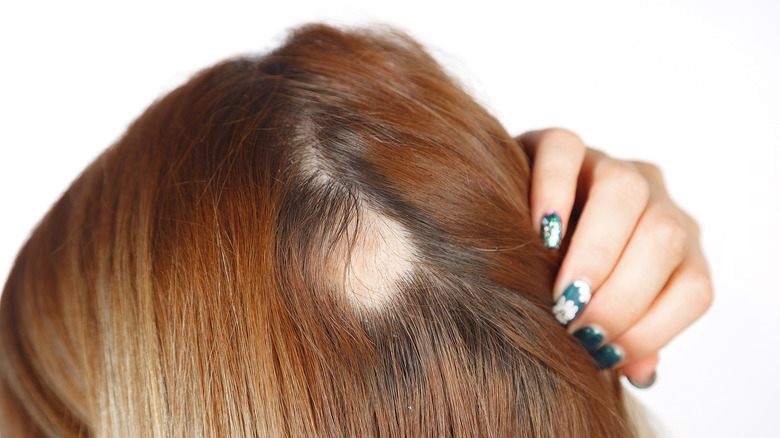Can You Grow Your Hair Back After You Have Alopecia?
Hair is a deeply personal topic. For the most part, people have their whole lives to figure out the best styles and care routines for their hair. But not everyone is so lucky. Some people are required to keep their hair a certain length or style for their job, or they start losing their hair early on. Others suffer from a condition that affects their hair follicles, a disorder commonly known as alopecia.
The term "alopecia" can be traced back to the Greek word "alōpēx", meaning "fox." The word was later fused with Latin and picked up by the speakers of Middle English, at which point it became the word for a disease that causes a fox's fur to fall out in small patches, according to Merriam-Webster.
There are several kinds of alopecia. Some alopecia is caused by hormone imbalance from Polycystic Ovary Syndrome (PCOS). This form of alopecia will cause hair to thin, usually around the part or the hairline, leading to what some refer to as female pattern baldness (via PCOS Diet Support). A more common form of alopecia, alopecia areata, occurs when a disease attacks the hair follicles (via National Institutes of Health). People with this form of alopecia most often lose their hair in small round patches about the size of a quarter.
It is possible
Re-growing hair will be difficult for people with PCOS-induced alopecia. They will have to address the underlying hormonal imbalance first. But those with alopecia areata do have some options available. It is important to note, however, that there is no cure for alopecia (via NIH). Hair may be regrown, but it may later fall out again. The condition is extremely unpredictable over time and in severity: while most cases cause small patches of hair loss, it can also cause extreme baldness or, in the worst cases, the complete loss of body hair. And researchers have no way of knowing how severe a case of alopecia will be.
The National Alopecia Areata Foundation lists several treatment options. There is no single right option and, just like the NIH, the foundation stresses that hair may be regrown and then lost again later. Still, some people with alopecia may want to investigate options for hair re-growth on the chance that hair loss will not reoccur.
More often than not, this attempt takes the form of an intralesional corticosteroid injection. The NIH describes this as a small needle pierced through the skin to deliver a specific kind of steroid to hair follicles in bald spots. This steroid encourages new hair growth, eventually erasing the bald spot as the hair grows in. The hair may fall out again later, but this is a relatively side-effect free way to begin re-growing lost hair.


